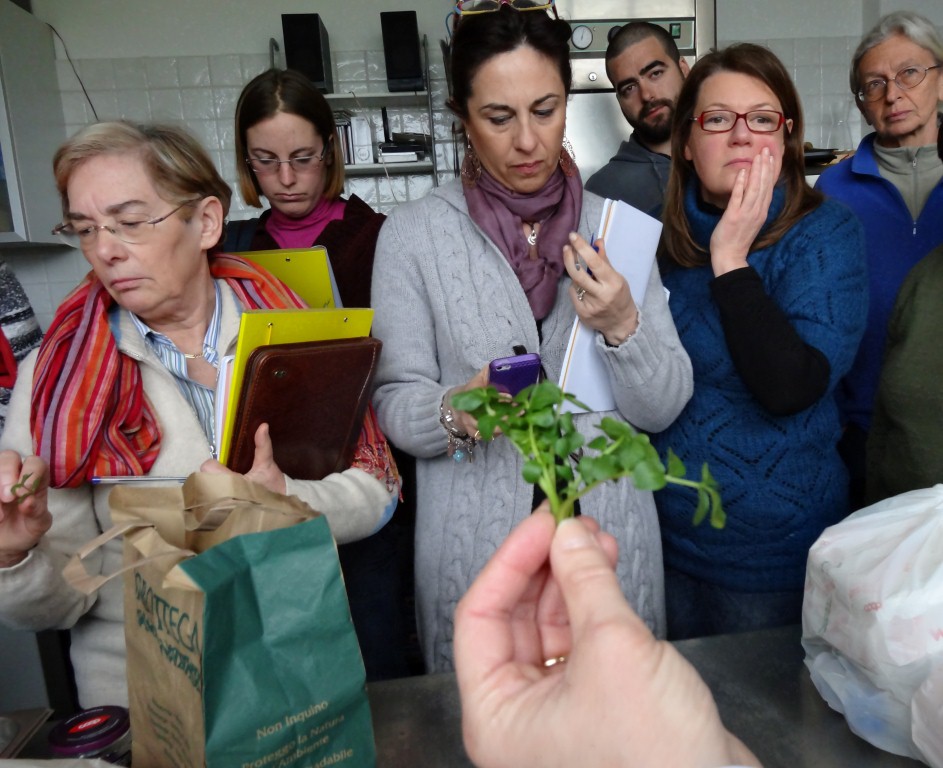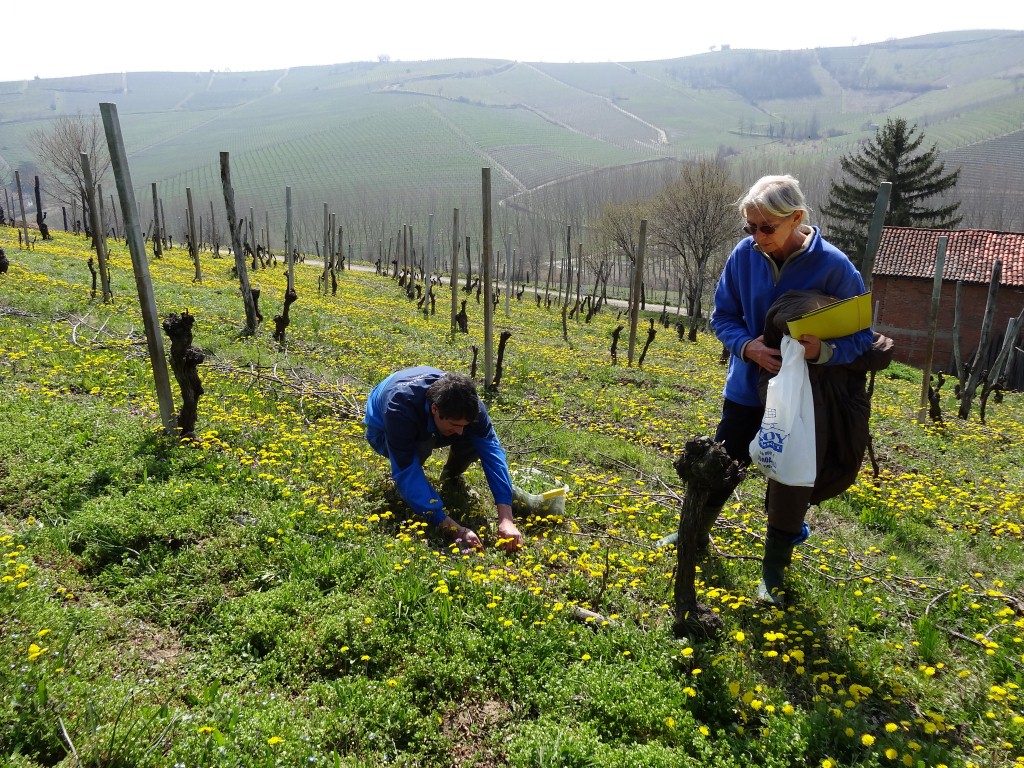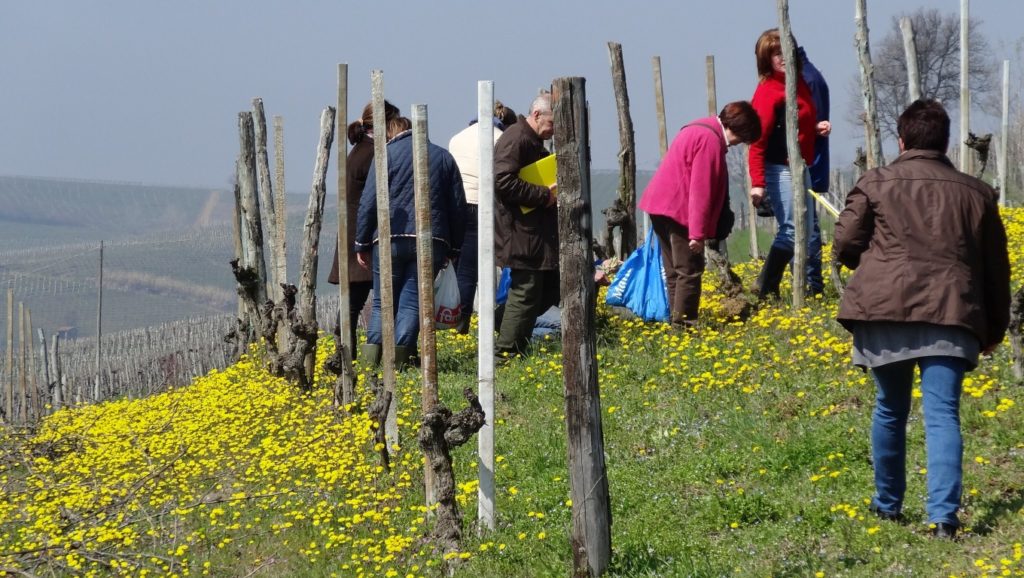One of the benefits of being a farmer is that I get the chance to follow all kinds of free courses, ranging from learning how to handle the chainsaw, pruning walnuts to … learning to recognize wild plants and their use in the kitchen.
We are always intrigued by people looking for delicacies in the fields and every spring we go on a wild asparagus hunt. We also like to use wild fennel in the kitchen, but I thought it would be useful to expand that knowledge.

So, in april of 2013 I travelled with 25 colleague farmers to an agriturismo in Cassine where we would learn more about edible plants. It was a pleasant and educational day, but I don’t know if I will dare to put the acquired knowledge into practice.
After the first part of the lesson, in which the teacher showed us all kinds of plants that she had picked around her house, we went to check with a few people in the garden if we were able to recognize plants. We were 4 and I think we have expressed 3 different options for each plant, which of course does not give much confidence.

Unfortunately I don’t seem to have a good memory for plants – I keep talking about “the one with those yellow flowers” – but it was at least a pleasant experience and … also a tasty one. Because how can you learn about edible plants without eating them? So, after a search in the vineyards and a cooking demonstration, we were allowed to put our legs under the table.
To be honest, I don’t know exactly which plants I have eaten, but I have eaten the best “soup” ever. I write soup in quotation marks because it wasn’t actually liquid, all the moisture was absorbed by the bread that was in it. But I can assure you: it was delicious !

The lunch break was slightly longer than expected, so the following slide show with plants had to be shortened a little, but you will not hear me complaining about that ?

